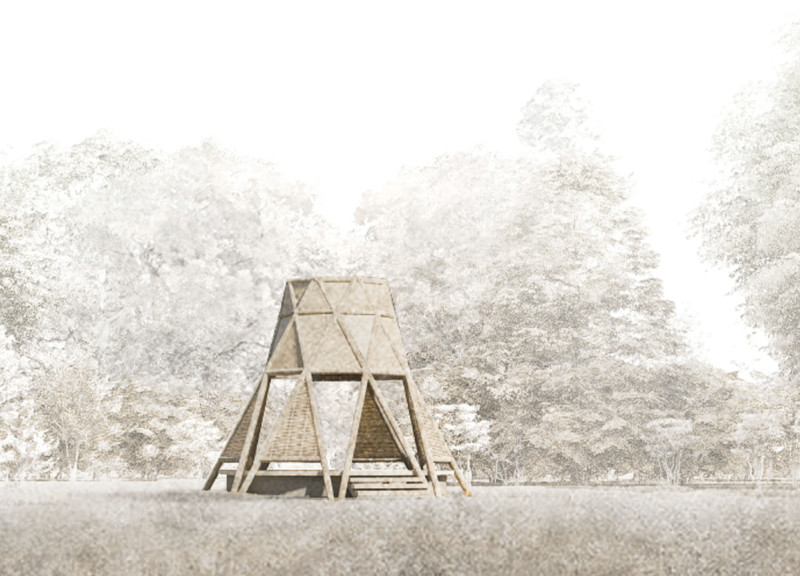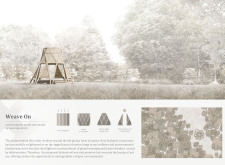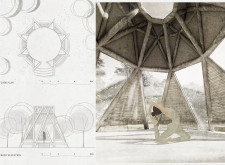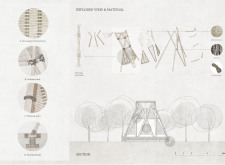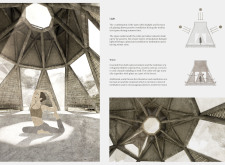5 key facts about this project
The primary function of "Weave On" is to provide a space for reflection and relaxation amidst nature. The design supports various activities, including yoga and meditation, as well as social gatherings. The hexagonal base and ascending pyramidal forms are not only visually distinctive but also enhance the functionality of the cabin by allowing flexible use of space while maximizing light and ventilation.
The project’s aesthetic is characterized by its geometric shapes, which reach toward the sky, creating a visual dialogue with the landscape. The open floor plan allows for fluid movement and interaction between different areas within the cabin. Noteworthy is the central skylight, which serves as a focal point, flooding the interior with natural light and linking occupants to the celestial environment above.
Materiality plays a crucial role in the design. Woven bamboo cladding not only enhances the visual quality but also aligns with sustainable practices by utilizing renewable resources. The careful integration of bamboo in various structural joint elements further emphasizes a commitment to traditional craftsmanship while meeting modern design requirements. The use of canopy rope to secure components of the structure exemplifies this project’s thoughtful engagement with materials that minimize environmental impact.
A distinctive aspect of "Weave On" is its integration of passive design principles. The strategic orientation of the cabin allows for optimal natural lighting and ventilation, accommodating seasonal changes efficiently. This approach enhances user comfort while contributing to the building's energy efficiency.
Furthermore, the design incorporates meditation spaces around the cabin's perimeter, allowing for an uninterrupted connection with nature. This layout not only provides tranquil escape areas but also fosters a sense of community for individuals to engage with the natural environment.
This project exemplifies a unique design vision that prioritizes the interconnection of architecture and ecology, creating a harmonious living experience. To explore "Weave On" further, review the detailed architectural plans, sections, and designs that shed light on the innovative architectural ideas employed throughout the project.


